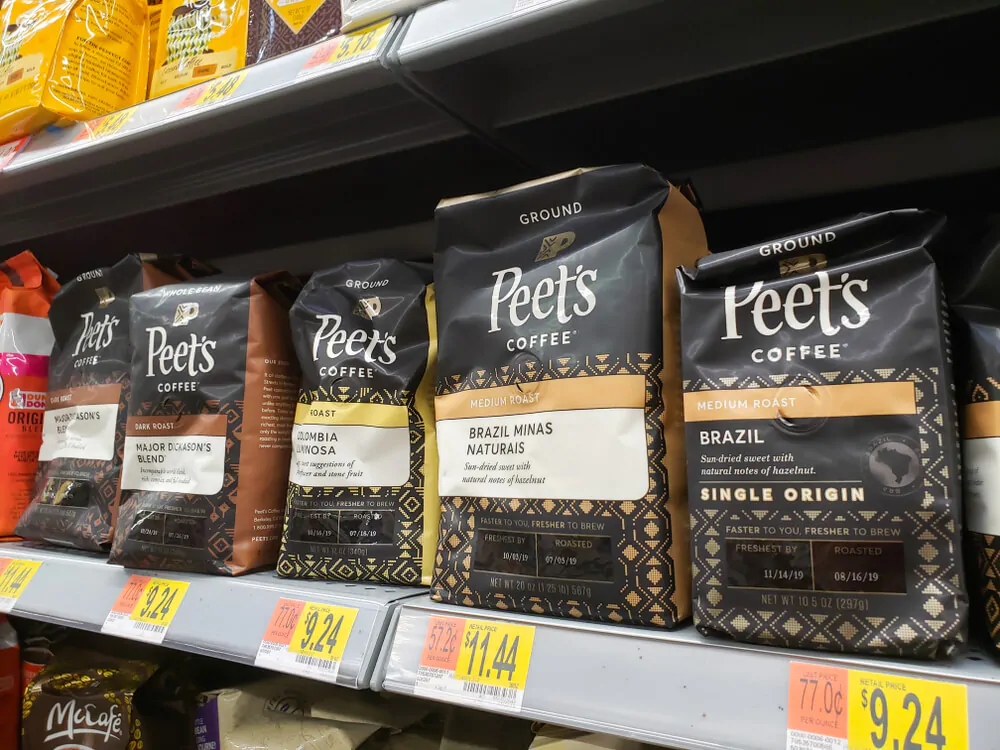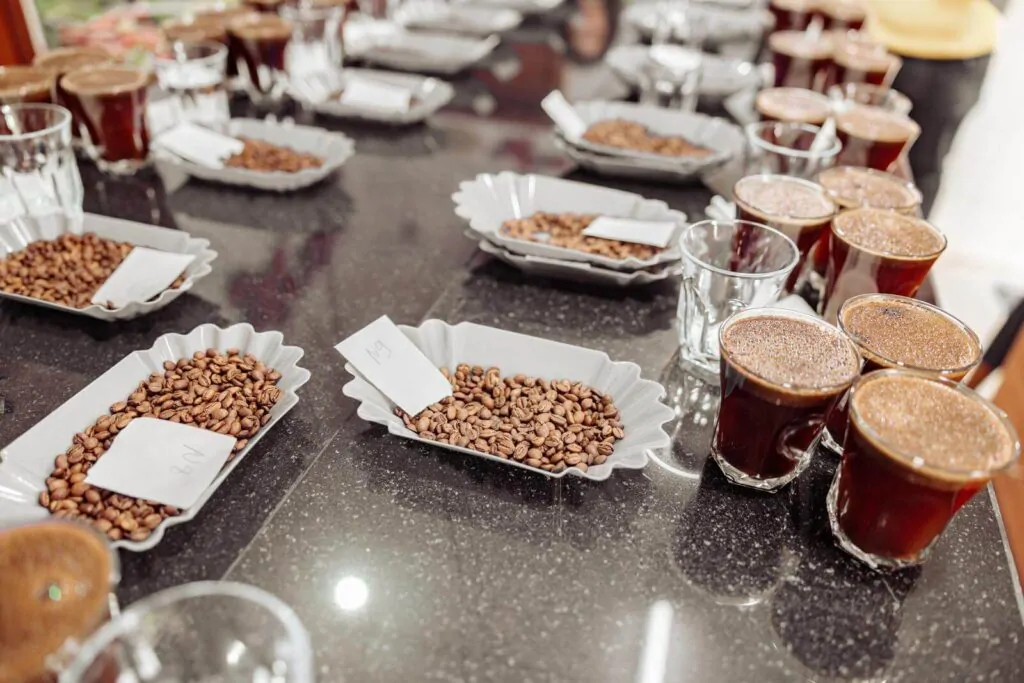A steeper price is justified if a product ensures good quality, but why is Peet’s Coffee so expensive? Is there more to it than quality? Read on to find out!

One of my pet peeves is overpriced products without justification. Lots of overpriced items have no redeeming qualities, but thankfully, this is rarely the case with coffee. This is what makes Peet’s Coffee so beloved; it is a bit pricier, but the quality is undeniable and continues to be consistently high.
The company has already established itself as a master of the coffee craft not just because the founder was the pioneer of specialty coffee but because of the intricate processes that happen behind the scenes. Peet’s Coffee is so expensive because it’s Fair Trade, undergoes rigorous testing, and values sustainability. Let’s learn more.
Building A Relationship With Farms
You can’t have a quality cup without tending to your excellent source of coffee beans. The founder, Alfred Peet, paved the way in the franchise’s early days and formed partnerships that last to this day.
Peet’s Coffee adheres to the Fair Trade standards to ensure that their partner farms are cared for. This means the company pays higher prices not only to ensure the quality of the coffee beans but also to aid the farmers in improving their quality of life.
One such example is the KILICAFE initiative, where Peet’s Coffee worked with TechnoServe and helped more than 9,000 Tanzanian coffee farmers process and export their own coffee, allowing them to sell at a better price. Consequently, such aid safeguards the value of the partnership. The company also invests in these coffee farmers by sending experts to educate them on coffee farms and crop cultivation.
The philanthropic activities branch out to the community, as well. For instance, Peet’s Coffee has also funded the Bunum-Wo Butterfly School, located in one of the coffee estates in Papua New Guinea. Another is the Kidane Mehret Self-Help Association (KIMSSA) which aids underprivileged children in Ethiopia by providing tutoring and vocational schooling.
These numerous efforts certainly have a price, but if it translates to more opportunities for farmers and more excellent cups of Joe for us, then an extra dollar or two on the products is worth it. You can check out other companies that adhere to fair trade standards by reading our list of the best sustainable coffee brands to try!
Straight Into The Cupping Lab
Before the coffee beans are deemed suitable for distribution, they will undergo intense scrutiny in Peet’s Cupping Lab. Their coffee department, which consists of trained experts and professionals, will check the aroma, flavor, and even the bean’s weight and aftertaste. This process is led by the roastmaster, who will sample at least 10 to 20 cups a day.

Once the coffee beans are assessed, comprehensive feedback is made for new potential blends, which will be sent to the farmers and millers if the product needs refinement. Otherwise, it is sent to the roasting team and sensory specialists either for further evaluation or if deemed acceptable for distribution.
This additional work might be minute to some, but they are one of the crucial elements in making sure Peet’s Coffee products are consistent in terms of freshness and quality of flavor.
The Roasting Process Begins
Being a certified roaster at Peet’s Coffee is no easy feat, as it takes years of training and experience to perfect it. It is why less than 15 people, with almost two decades of average tenure, are qualified to do the work. These experts rely heavily on their five senses, so much so that they know the smell or the sound of a perfectly roasted batch.
The roasters usually start their day before sunrise as they are responsible for processing all of the pre-ordered coffee beans. The company has a roast-to-order policy, meaning that only the orders from the previous day will be manually roasted in small batches as they prioritize quality over quantity.
Every batch of beans that will arrive at their warehouse is to be dispatched as soon as the roasting process is done. Coffee business owners will tell you that this isn’t the cheapest nor the most efficient, but the late Alfred Peet’s steadfast belief in freshness with every cup continues to be upheld.
Once a batch is roasted, it is then brewed and undergoes another round of evaluation done by the roasters themselves, and they have a strict process. Some opt to skip a few meals so their palates won’t get compromised.
The cup of Joe has to pass the blind test, and the roasters will provide an assessment of each other’s work. If it passes, it will be bagged and shipped. Otherwise, the batch will be discarded, and the whole process will start again.
The intricate process and the qualifications of the roasters Peet’s Coffee employs are major factors why their product is justifiably expensive. Arguably, having an environmental approach can also drive up the price.
A Trailblazer In Coffee Innovations
Peet’s Coffee sets the standard when it comes to sustainability. They have the first Leadership in Energy and Environmental Design (LEED) Gold Certified roasting facility, which ensures the impact of the coffee-making process is minimized.

Their facility utilizes a heat exchange technology which decreases the usage of natural gas by 40%, and HVAC systems which reduce emissions of greenhouse gasses. Roasting by-products such as coffee chaff are recycled by using it as mulch, a material added to soil to improve its health and quality and which can also be used by coffee farms.
Additionally, they have become one of the only coffee brands to fully transition to water processing in decaffeinating their coffee beans. Chemicals were often used in the past to achieve this, but the natural water process uses only a solution of pure hot water and unroasted coffee beans. This guarantees that the caffeine is flushed out but with the full flavors of the coffee bean intact.
If you are a coffee business owner and want to find out if your product is too cheap or too expensive, you can check out our best coffee shop pricing strategy to help you make more profit.
